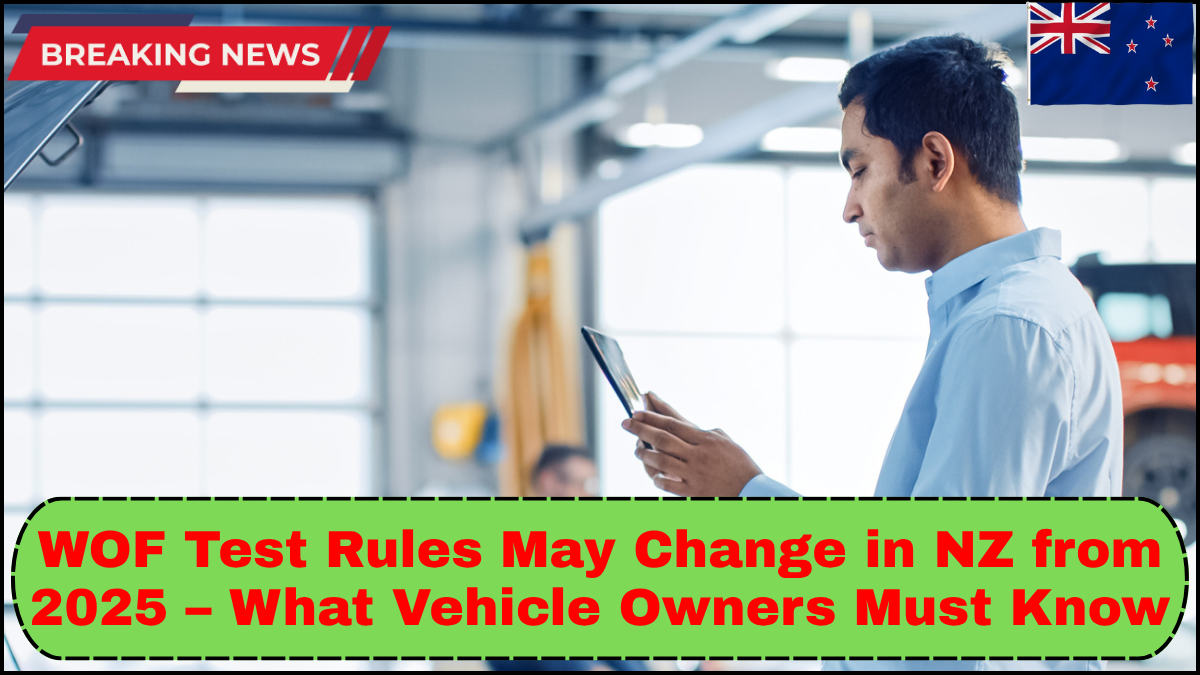Significant changes may be on the horizon for New Zealand’s vehicle inspection system. The NZ Road WOF Test Updates 2025 are expected to bring revisions that impact how vehicle owners approach road safety compliance. If you’re a driver, vehicle owner, or operate a fleet, it’s crucial to understand what these potential changes mean for you.
The Warrant of Fitness (WOF) test has long been a critical part of New Zealand’s road safety framework. It ensures that vehicles meet minimum safety standards before they’re allowed on public roads. But from 2025, the system may shift, bringing in new criteria, testing intervals, or technology standards.

Let’s break down what’s changing, why it matters, and how to stay compliant in the years ahead.
Understanding the Current WOF Test in NZ
Before diving into the 2025 update, it’s helpful to revisit how the current WOF test in NZ works. At present:
-
Vehicles first registered after January 1, 2000 require a WOF check every 12 months.
-
Vehicles first registered before January 1, 2000 need to be inspected every 6 months.
-
New vehicles (less than 3 years old) get a WOF that’s valid for three years from the date of first registration.
The WOF inspection checks key components such as brakes, tyres, lights, steering, suspension, seatbelts, glazing, and structural integrity.
What Might Change in 2025?
The 2025 update could mark the most significant revision to the vehicle fitness rule in years. While specific legislation is still being finalized, early indications suggest several possible shifts:
1. Inspection Frequency Based on Vehicle Condition
Rather than using fixed age-based intervals, inspection frequency may shift to condition-based assessments. This means that newer, well-maintained vehicles might only need a WOF test every two years, while older or poorly maintained ones could require more frequent checks.
2. Introduction of Digital Diagnostics
To keep up with modern vehicle technology, the 2025 update could require integration of electronic diagnostics into the WOF test. Advanced onboard systems such as automatic emergency braking (AEB), lane-keeping assist, and emissions control modules might become part of the evaluation.
3. Enhanced Emissions Testing
As New Zealand targets lower emissions across the transport sector, stricter emissions thresholds may be introduced. Vehicles that fail to meet standards could either be restricted from use or required to undergo costly repairs.
4. Stricter Compliance for Imported Vehicles
Imported used vehicles, particularly those from countries with different safety standards, may face more stringent inspections under the new NZ Road WOF Test Updates 2025. This ensures that all vehicles on NZ roads meet consistent benchmarks.
Why the Changes Matter
These proposed changes aren’t just bureaucratic adjustments—they reflect a broader effort to improve road safety, environmental health, and vehicle performance. With electric and hybrid vehicles becoming more common, the WOF test NZ framework must evolve to remain relevant.
The Ministry of Transport argues that a smarter, more adaptive system can better serve modern needs, reduce unnecessary checks, and cut costs for responsible vehicle owners—without compromising safety.
How Vehicle Owners Can Prepare
To stay ahead of the curve, here’s what you should do:
-
Stay Informed: Follow updates from NZTA and the Ministry of Transport regarding the WOF test rule changes.
-
Maintain Your Vehicle Proactively: Regular servicing, especially for brake systems, suspension, and electronics, can keep your car compliant regardless of WOF frequency.
-
Keep Digital Records: Future inspections might rely more on logged maintenance data, especially for newer vehicles.
-
Check Emissions Compliance: Diesel owners and importers should ensure their vehicles meet current emissions standards and anticipate stricter future limits.
Potential Impact on Different Groups
Private Owners: May benefit from reduced inspection costs if their cars are in good condition.
Fleet Managers: Could face increased administrative responsibilities as digital reporting and variable inspection intervals are introduced.
Used Car Importers: May need to adjust sourcing practices to align with updated WOF test NZ compliance criteria.
FAQs
Q1: When will the new WOF test rules officially take effect?
A1: While 2025 is the expected rollout year, the final implementation date will depend on government approval and industry readiness.
Q2: Will older cars automatically require more frequent inspections?
A2: Not necessarily. While age may factor in, the proposed system might use vehicle condition and history as primary indicators.
Q3: How will the emissions rule affect diesel vehicles?
A3: Diesel vehicles may face tougher standards. Regular checks and proper tuning will be essential to remain compliant.
Q4: Are electric vehicles included in these changes?
A4: Yes. EVs will likely face inspections tailored to battery health, electronic systems, and brake efficiency.
Q5: Where can I find the latest updates?
A5: Visit the official NZ Transport Agency website or subscribe to alerts from the Ministry of Transport.
click here to learn more